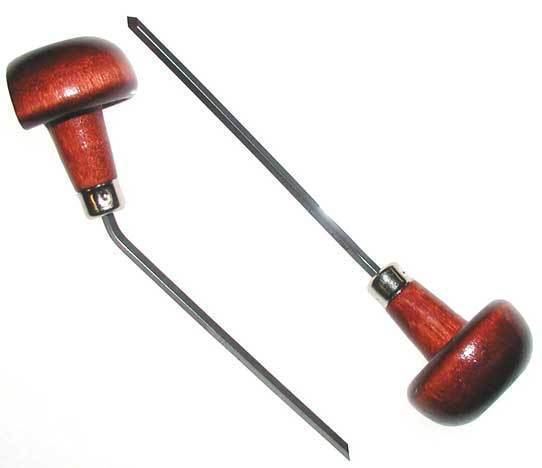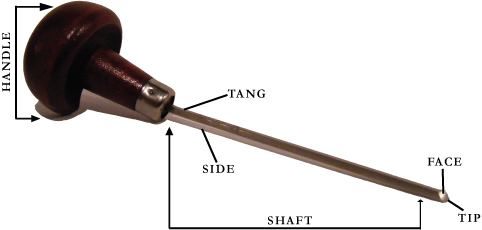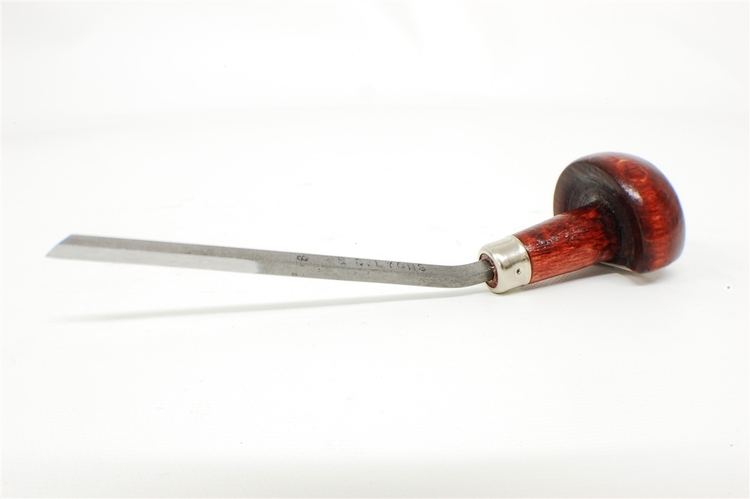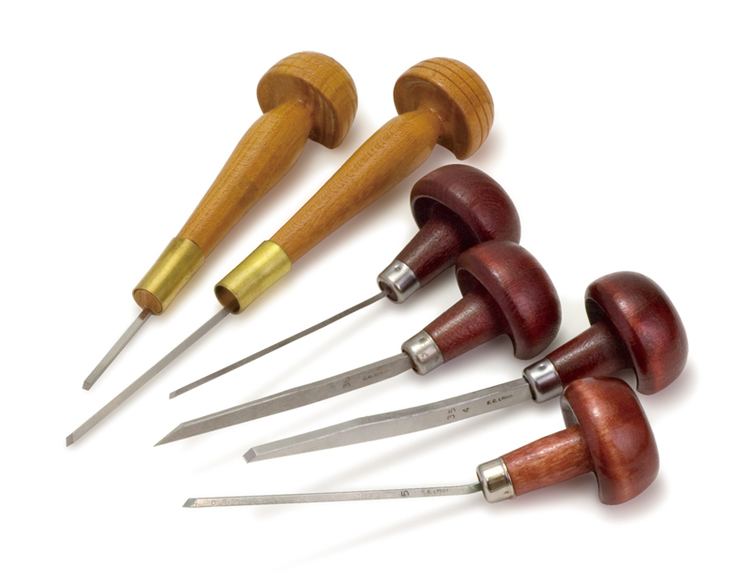 | ||
In the field of lithic reduction, a burin /ˈbjuːrɪn/ (from the French burin, meaning "cold chisel") is a special type of lithic flake with a chisel-like edge which prehistoric humans may have used for engraving or for carving wood or bone.
Contents

Burins exhibit a feature called a "burin spall", in which toolmakers strike a small flake obliquely from the edge of the burin flake in order to form the graving edge.

The 1929 burin tsunami
Documented use

Burin usage is diagnostic of Upper Palaeolithic cultures in Europe, but archaeologists have also identified it in North American cultural assemblages, and in his book Early Man in China, Prof. Dr. Jia Lanpo of Beijing University lists dihedral burins and burins for truncation among artifacts uncovered along the banks of the Liyigon river near Xujiayao.

An example of a type of burin diagnostic of the archaeological stratum where they are found is the "Noailles" burin, named for its original find-site, the Grotte de Noailles, in the commune of Brive-la-Gaillarde, Corrèze, in southwestern France. a small multiple burin characteristic of the Upper Paleolithic cultural stage called the Gravettian, ca. 28–23,000 BC; these flake tools have been restruck and refined to give several chisellike edges and a blunt, grippable rear edge.
